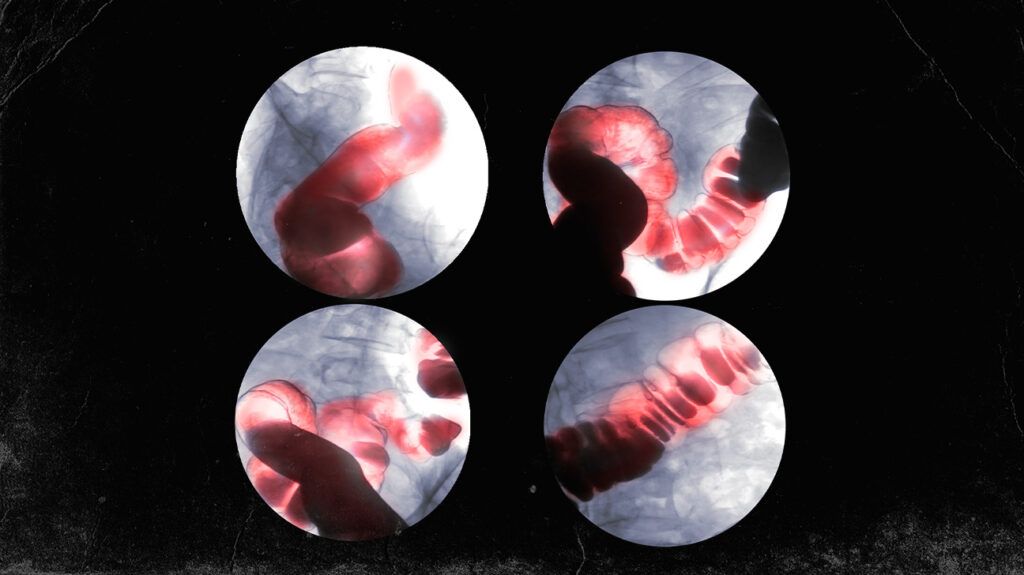An esophagoscopy is a procedure doctors use to explore the upper gastrointestinal (GI) tract. The procedure is minimally invasive and low-risk, and most complications tend to be temporary.
An esophagoscopy involves a doctor inserting a narrow tube with a light and camera on its end through the mouth or nose, down the throat, and into the esophagus. It is common to feel some side effects after this procedure, such as drowsiness, abdominal discomfort, and a sore throat.
Although an esophagoscopy is generally a safe procedure, more serious risks include perforation of the esophagus, infection, or internal bleeding.
This article discusses the possible risks of esophagoscopy, how they occur, and how common they are.

Sometimes, the instrument a doctor uses in the procedure — an esophagoscope — enters the esophagus and can puncture the tissue, causing a hole. This is known as esophageal perforation.
According to a 2021 review, esophageal perforation is the
A 2018 review examining studies between 1993 and 2015 found that esophageal perforation accounted for
Esophageal perforation can be dangerous in some cases. Some signs of perforation include:
- neck pain
- difficulty or discomfort swallowing
- changes in the voice
- shortness of breath or rapid breathing
- pain in the upper abdomen
- referred shoulder pain
Although rare, esophagoscopy can cause a condition known as subcutaneous surgical emphysema. This means that air becomes trapped under the skin. It can happen when the medical instrument injures areas such as the trachea or esophagus, allowing air to enter the skin’s subcutaneous (or deepest) layer.
Subcutaneous emphysema often appears as a slight bulging in the skin that may make a crackling sound when a healthcare professional palpates it. Treatment involves finding and addressing the root cause of it, for example, repairing an injury to the esophagus.
In minor cases, subcutaneous emphysema may be undetectable and does not cause much discomfort to the individual. More severe cases
Learn more about subcutaneous emphysema.
In some cases, doctors use esophagoscopy to obtain a tissue sample from the esophagus, which helps them diagnose various health conditions. This is known as a biopsy.
Biopsy can sometimes cause a small amount of bleeding and does not usually require additional treatment.
More serious cases of bleeding due to upper gastrointestinal (GI) endoscopy — a similar procedure to esophagoscopy that explores the entire upper GI tract — are very rare, but it is more likely if a procedure involves a biopsy. This may happen due to tearing or rupture in the esophagus, which can be serious in some cases and require surgical repair.
In severe cases, internal bleeding can be
Signs of internal bleeding in the chest include:
- abdominal pain
- chest pain
- shortness of breath
- dizziness
It is not common to contract an infection from an esophagoscopy. A 2022 systematic review of studies found that the infection rate for GI endoscopic procedures, such as esophagoscopy, was
However, an infection may happen if the instrument or endoscope contains bacteria, is not cleaned correctly, or is damaged — all of which can contribute to bacteria living and thriving on the equipment.
Also, an infection can occur when there is an injury to the esophagus, which can potentially allow bacteria from the mouth, trachea, or esophagus to enter the bloodstream.
Signs of an infection following an esophagoscopy procedure include:
- pain
- swelling
- fever or chills
- difficulty breathing
- nausea
Doctors take several steps to minimize the risk of problems after esophagoscopy. These include:
- ensuring that someone has thoroughly cleaned and stored equipment appropriately
- completing risk assessments
- assessing a person’s suitability to receive the procedure
- receiving training for the procedure
- having access to resources and equipment to help manage complications
If an individual thinks they may be experiencing complications following an esophagoscopy procedure or has consistent discomfort or pain, they should contact their healthcare team immediately. Outcomes such as infection and severe bleeding can be dangerous in some cases.
A person should always discuss their concerns about risks before the procedure. This can help alleviate any fears and help manage negative outcomes should they occur.
An esophagoscopy is a generally safe procedure that does not tend to cause serious problems. However, in some cases, conditions such as esophageal perforation, bleeding, and infection can occur and require immediate treatment by a doctor.
Healthcare professionals will take steps to ensure that the procedure is as safe as possible and will treat most problems as soon as they occur. An individual needs to speak with a doctor immediately if they are experiencing persistent pain or discomfort or any other signs of a problem after the procedure.
